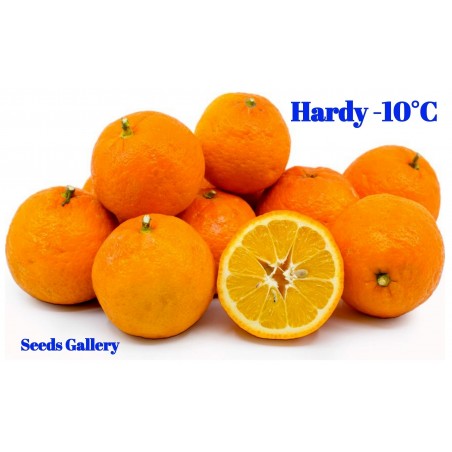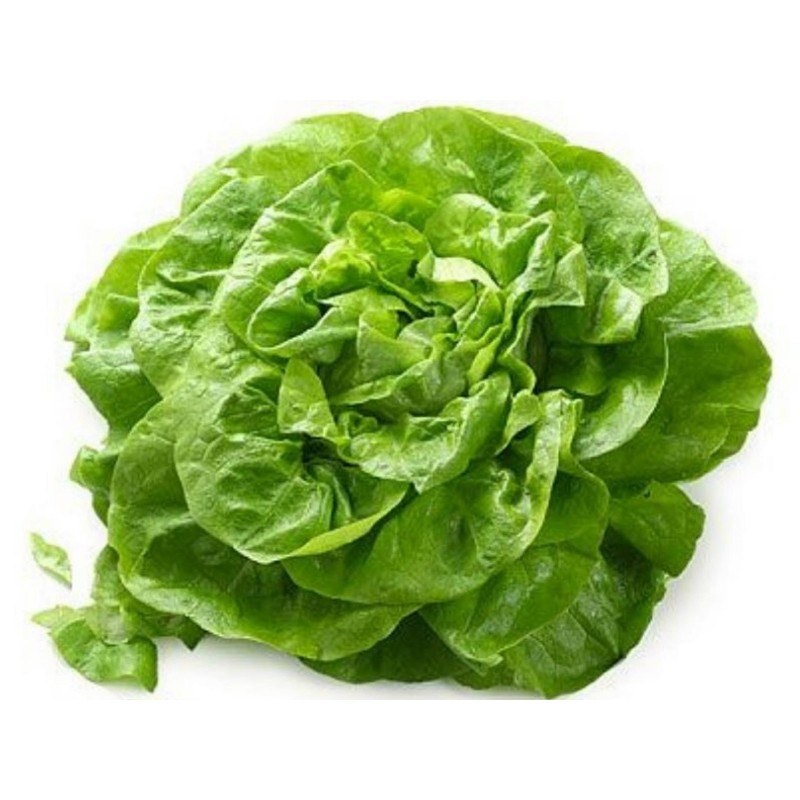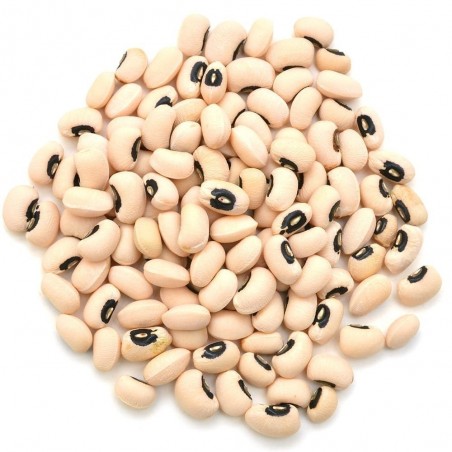
Head Lettuce Seeds Novosadska Majska
Head Lettuce Seeds Novosadska Majska
Price for Package of 550 seeds (0,5g).
Novosadska Majska is a spring-headed cultivar, the leaves are tender, yellow-green, smooth and entire around the rim. It has a large and quite solid head, weighing 250-300 g. It is suitable for open field cultivation.
Head Lettuce Seeds Novosadska Majska
Price for Package of 550 seeds (0,5g).
Novosadska Majska Novosadska Majska (named after the city of Novi Sad in Serbia) is a spring-headed cultivar, the leaves are tender, yellow-green, smooth and entire around the rim. It has a large and quite solid head, weighing 250-300 g. It is suitable for open field cultivation.
Lettuce (Lactuca sativa) is an annual plant of the daisy family, Asteraceae. It is most often grown as a leaf vegetable, but sometimes for its stem and seeds. Lettuce is most often used for salads, although it is also seen in other kinds of food, such as soups, sandwiches, and wraps; it can also be grilled.[3] One variety, the woju (莴苣), or asparagus lettuce (Celtuce), is grown for its stems, which are eaten either raw or cooked. In addition to its main use as a leafy green, it has also gathered religious and medicinal significance over centuries of human consumption. Europe and North America originally dominated the market for lettuce, but by the late 20th century the consumption of lettuce had spread throughout the world. World production of lettuce and chicory for calendar year 2017 was 27 million tonnes, 56% of which came from China.[4]
Lettuce was originally farmed by the ancient Egyptians, who transformed it from a weed whose seeds were used to create oil into an important food crop raised for its succulent leaves and oil-rich seeds. Lettuce spread to the Greeks and Romans, the latter of whom gave it the name lactuca, from which the English lettuce is ultimately derived. By 50 AD, many types were described, and lettuce appeared often in medieval writings, including several herbals. The 16th through 18th centuries saw the development of many varieties in Europe, and by the mid-18th century cultivars were described that can still be found in gardens.
Generally grown as a hardy annual, lettuce is easily cultivated, although it requires relatively low temperatures to prevent it from flowering quickly. It can be plagued by numerous nutrient deficiencies, as well as insect and mammal pests, and fungal and bacterial diseases. L. sativa crosses easily within the species and with some other species within the genus Lactuca. Although this trait can be a problem to home gardeners who attempt to save seeds, biologists have used it to broaden the gene pool of cultivated lettuce varieties.
Lettuce is a rich source of vitamin K and vitamin A, and a moderate source of folate and iron. Contaminated lettuce is often a source of bacterial, viral, and parasitic outbreaks in humans, including E. coli and Salmonella.
| HEIRLOOM ? | Yes |
|---|---|
| Organic Seeds ? | Organic Seeds |
| Handgeplukte zaden? | Handgeplukte zaden |
| Resistant to cold and frost ? | Resistant to cold and frost |
| Origin of seeds ? | Origin of Seeds: Serbia |
| Origin Country of Variety ? | Variety from: Serbia |
| Medicinal Plant ? | Medicinal Plant: Yes |


Uw beoordelingswaardering kan niet worden verzonden
Rapporteer reactie
Melding verzonden
Uw opmerking kan niet worden verzonden
Schrijf uw recensie
Beoordeling verstuurd
Uw beoordeling kan niet worden verzonden
🌍 Wereldwijde verzending vanuit de EU
Wij versturen wereldwijd vanuit de Europese Unie via aangetekende post met ontvangstbevestiging.
📦 Pakket volgen
Log in op je account en ga naar Bestelhistorie > Details om je track & trace-nummer te vinden.
Wereldwijde tracking: 17Track
Voor nummers zoals RGxxxxxxHR: Posta.hr tracking
🕒 Wacht minimaal 24 uur na verzending voordat trackinginformatie beschikbaar is.
⚠️ Belangrijke informatie
Betalen bij aflevering is niet mogelijk.
Controleer regelmatig je spam- of ongewenste mailfolder voor belangrijke e-mails.
Gebruik uitsluitend het contactformulier op onze website.
Directe e-mails worden mogelijk niet beantwoord.
📱 Telefoonnummer verplicht
Vermeld bij je bestelling altijd je mobiele telefoonnummer inclusief landcode.
Voorbeeld: +31 6 12345678
🚚 Leveringsvoorwaarden
Aangetekende zendingen vereisen een handtekening van de ontvanger.
Bestel niet als:
Je pakket in een brievenbus geleverd moet worden
Je niet thuis bent om het pakket in ontvangst te nemen
Je wilt dat het pakket bij de buurman wordt bezorgd (❌ niet mogelijk)
📬 Als je een brievenbusadres opgeeft en het pakket kwijt raakt, heb je geen recht op terugbetaling.
↩️ Retourzending en opnieuw verzenden
Als een pakket om welke reden dan ook wordt geretourneerd:
Ben je verantwoordelijk voor retourkosten van €2
En de verzendkosten voor het opnieuw verzenden
⏱ Vertragingen en tracking
Als de tracking aangeeft dat het pakket nog bij de verzender is, betekent dit dat het pakket onderweg is.
Neem contact op met je lokale postkantoor met het trackingnummer voor de meest actuele info.
Wij zijn geen postbedrijf en kunnen het pakket niet voor je volgen.
Wij zijn niet verantwoordelijk voor de levertijd.
🔍 Een onderzoek naar verloren pakketten kan pas gestart worden 30 dagen na verzenddatum.
✈️ Verzendopties
| Verzendmethode | Verwerkingstijd | Verzekering | Mogelijke vertraging | Opmerking |
|---|---|---|---|---|
| Standaard | 7–10 werkdagen | ❌ | 7–14 werkdagen | Goedkoopste optie |
| Prioriteit | 1–7 werkdagen | ❌ | 3–10 werkdagen | Prioriteit in verwerking, niet gegarandeerd sneller |
| Verzekerd | 1–7 werkdagen | ✅ | 3–10 werkdagen | Geld terug bij verlies (tot €150) |
🕒 Geschatte levertijd:
Binnen de EU: 3–20 werkdagen
Wereldwijd: 5–30 werkdagen
Voorbeelden levertijden VS: 27, 22, 19, 17, 13 dagen
💳 Betaalmethoden
💶 Bankoverschrijving (SEPA / IBAN / SWIFT-BIC)
Vermeld altijd je bestelnummer in de omschrijving (bijv. SGS-19811702).
Bij het ontbreken van deze referentie kan je bestelling vertraagd worden of geannuleerd.
Bestellingen die niet binnen 7 dagen betaald zijn, worden automatisch geannuleerd.
🅿️ PayPal
We accepteren alleen betalingen in euro’s via PayPal.
Kies tijdens het betaalproces voor de valuta euro.
💳 Betaling met kaart
Betaling verloopt via onze website: Exotic Seeds Store
We accepteren Visa, MasterCard, American Express, Diners Club, UnionPay, JCB, Discover en meer.
💡 De klant draagt eventuele transactiekosten.
Stuur bij voorkeur een betaalbewijs mee voor een snellere verwerking.
📅 Overige informatie
Wij verwerken en versturen geen bestellingen in het weekend (zaterdag en zondag).
Controleer altijd de belangrijke mededelingen op onze website (feestdagen, speciale voorwaarden e.d.).
📫 Let op:
Stuur geen e-mails rechtstreeks naar ons. Gebruik alleen het contactformulier op onze website voor vragen.
Related Products











